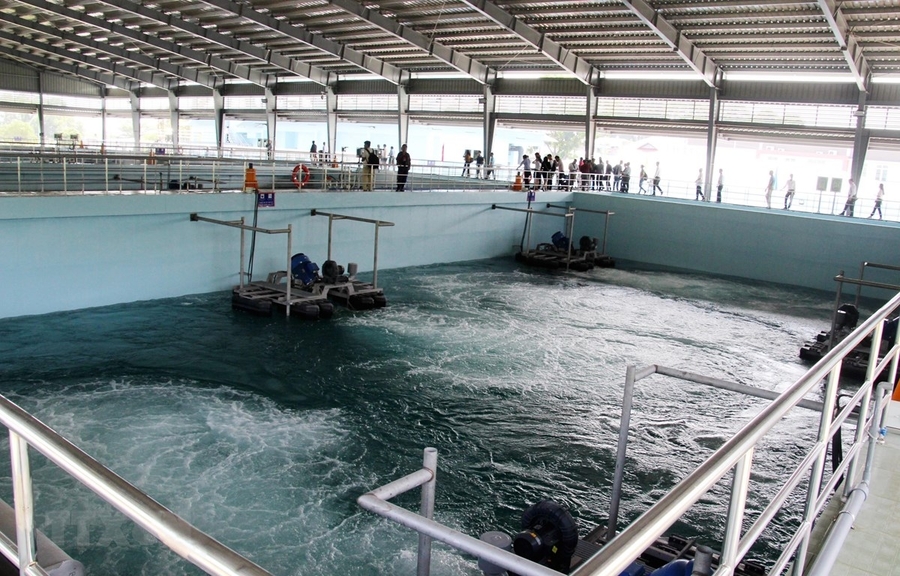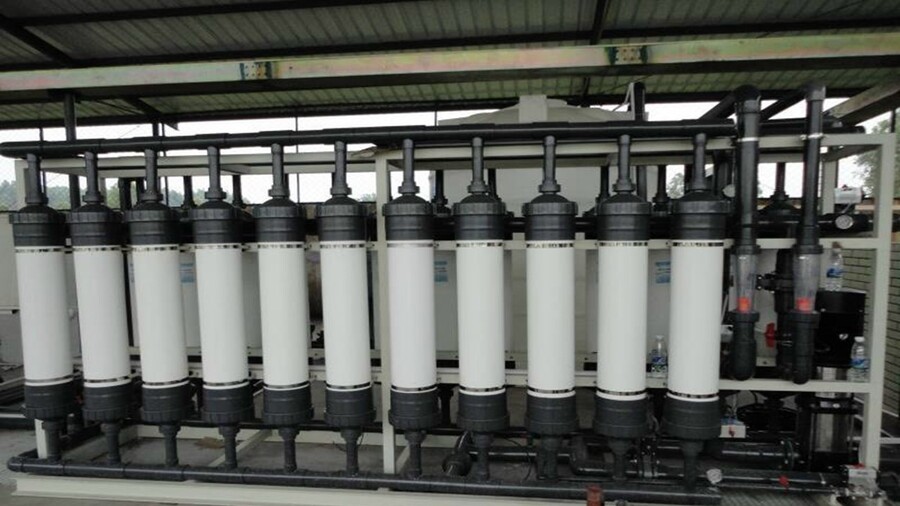Wastewater reuse is becoming an urgent and sustainable solution as freshwater resources face increasing scarcity and pollution. It is not only a global trend but also a necessity to ensure water security, protect the environment, and optimize production and domestic costs. Let’s explore the top 4 most effective wastewater reuse technologies with Đại Nam Environmental Solutions in the article below!
1. What is Wastewater Reuse?
Wastewater reuse refers to the process of collecting and treating used water (from domestic, industrial, agricultural sources, etc.) to a certain quality level for reuse in various applications. This process involves multiple complex treatment stages—not just simple filtration—to remove pollutants, bacteria, heavy metals, and other unwanted components.
The quality of treated water depends on the intended reuse purpose. Reclaimed water can be used for irrigation, industrial cooling, sanitation, groundwater recharge, and even potable purposes in some cases with advanced technologies.

Wastewater reuse is an important issue today
2. The Current Water Resource Situation in Vietnam
Vietnam is known for its abundant surface water resources, yet the country is facing serious challenges. Water resources are unevenly distributed across regions and seasons—mostly concentrated during the rainy season and in major river basins—while many areas suffer from drought and water shortages.
Rapid urbanization, industrialization, and intensive agriculture are driving water demand up. Meanwhile, untreated or poorly treated domestic and industrial wastewater is severely polluting surface and groundwater sources. Climate change further aggravates the problem with extreme weather events such as prolonged droughts, erratic floods, and saline intrusion. These issues underline the urgent need for sustainable water management solutions, among which wastewater reuse emerges as a strategic choice.

Our country is facing water pollution and lack of clean water in many places
3. Wastewater Reuse Systems – A Global Trend
Globally, the implementation of wastewater reuse systems has become increasingly common and essential. Many developed and developing countries—especially those suffering from water scarcity, like Israel, Singapore, Australia, and California (USA)—have pioneered wastewater reuse technologies and achieved significant success.
These systems are a core part of the circular economy, where resources are maximized and waste minimized. Besides addressing water scarcity, they offer various benefits such as reducing reliance on freshwater sources, minimizing pollution, cutting treatment and water procurement costs, and supporting sustainable development. This is a smart, sustainable, and eco-friendly approach.
4. Applications of Wastewater Reuse
Treated wastewater can serve various sectors, creating an efficient water cycle:
-
Agriculture and Landscaping: Reclaimed water can provide stable irrigation for crops (with strict microbial and heavy metal standards), industrial plants, parks, golf courses, medians, and urban gardens.
-
Industry: Ideal for cooling towers, boiler feedwater (with added demineralization), equipment washing, factory cleaning, and dust suppression in construction and mining.
-
Domestic Use: Suitable for non-potable uses like toilet flushing (requires dual piping systems), car washing, street cleaning, public sanitation, and firefighting—helping to save potable water for essential uses.
-
Environmental Conservation: Used to maintain minimum river flow during dry seasons, restore wetlands, replenish urban lakes and fountains, improve microclimates, and beautify urban and resort areas.
5. Popular Modern Wastewater Reuse Technologies
5.1. Microfiltration (MF)
MF is a common technology that physically separates suspended solids using membranes with pore sizes from 0.1 to 10 microns. It effectively removes bacteria, algae, spores, and solid particles while allowing water and smaller molecules to pass through.
Typically used as a pre-treatment stage before ultrafiltration (UF) or reverse osmosis (RO), MF is also widely applied in oil-water separation in industry, and in food and pharmaceutical processing to ensure microbial safety without affecting natural flavors.
5.2. Nanofiltration (NF)
NF membranes, with pore sizes around 0.001 microns, remove up to 90–95% of multivalent ions (like calcium and magnesium) and 30–50% of monovalent ions (like sodium or chloride), significantly softening the water.
Similar in design to RO but operating at lower pressure and with less rigid membranes, NF is ideal for medium-TDS water, organic compound removal, and softening. It’s widely used in pure water treatment, RO pre-treatment, and in pharmaceuticals, food, textiles, and dairy industries.
5.3. Ion Exchange
Ion exchange is a chemical-based process that replaces unwanted ions in water with desirable ones using specialized resin beads. It removes dissolved impurities like calcium, magnesium, iron, sodium, and potassium.
There are two main types of resin: cation (positive ions) and anion (negative ions). As water flows through the resin, the ions are exchanged, enhancing the water quality.
5.4. Evaporators
Evaporation technology purifies water through boiling and condensation, separating pure water from dissolved solids. It uses heat—via fuel or other energy sources—to vaporize water and condense it into clean water, leaving behind all impurities.
Evaporators are highly effective, producing nearly distilled-quality water and generating zero liquid discharge (ZLD). However, they require high investment due to complex design and high energy consumption.
Wastewater reuse is increasingly vital today. Investing in modern treatment and reuse systems not only eases the pressure on freshwater sources and reduces pollution but also provides economic benefits through reduced clean water costs and a stable supply for production and domestic needs.
At Đại Nam Environmental Solutions, we pride ourselves on being a professional wastewater treatment provider. Our team of skilled engineers is deeply knowledgeable about advanced technologies and committed to delivering the most efficient treatment solutions tailored to our clients’ needs.

